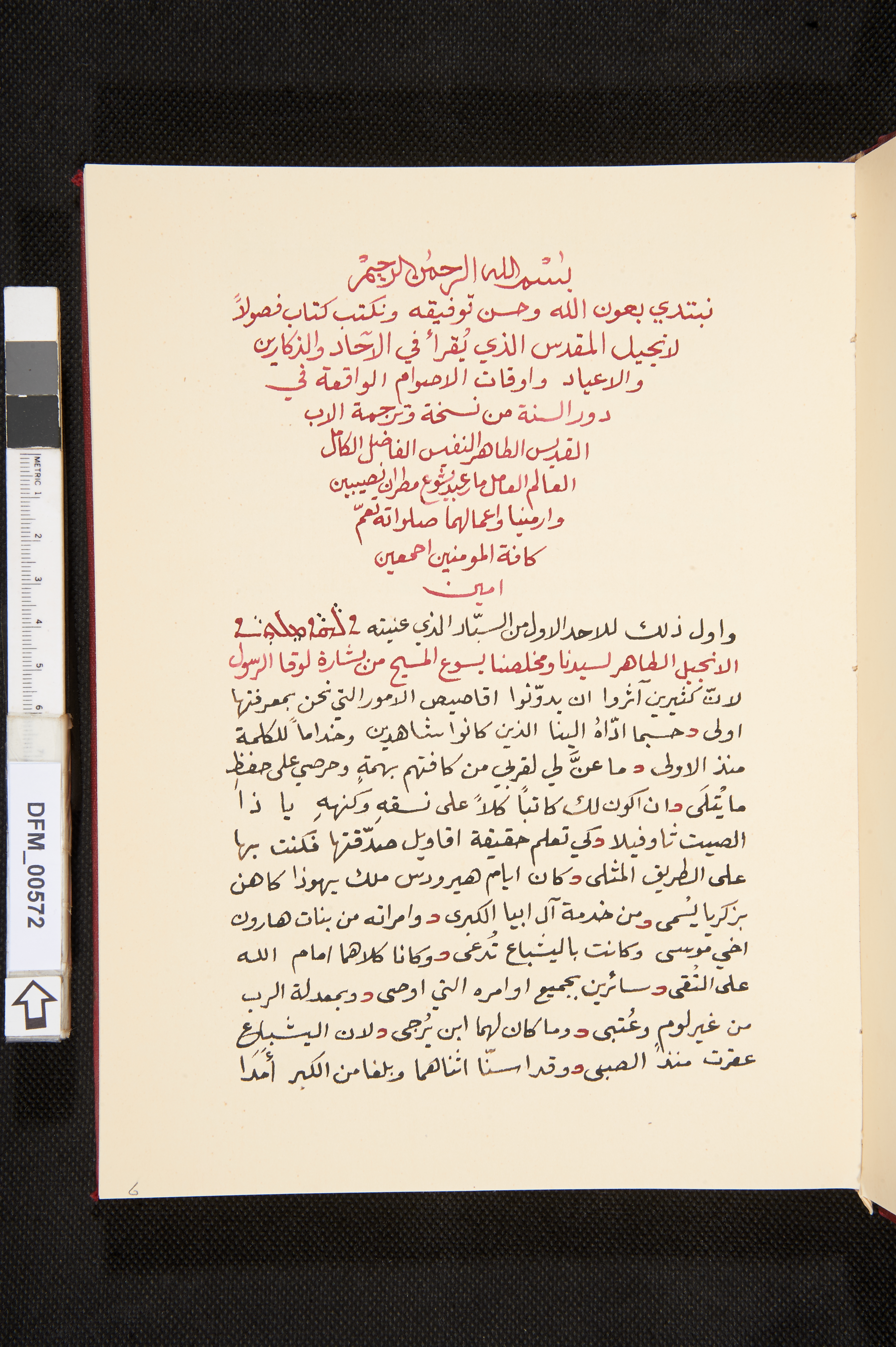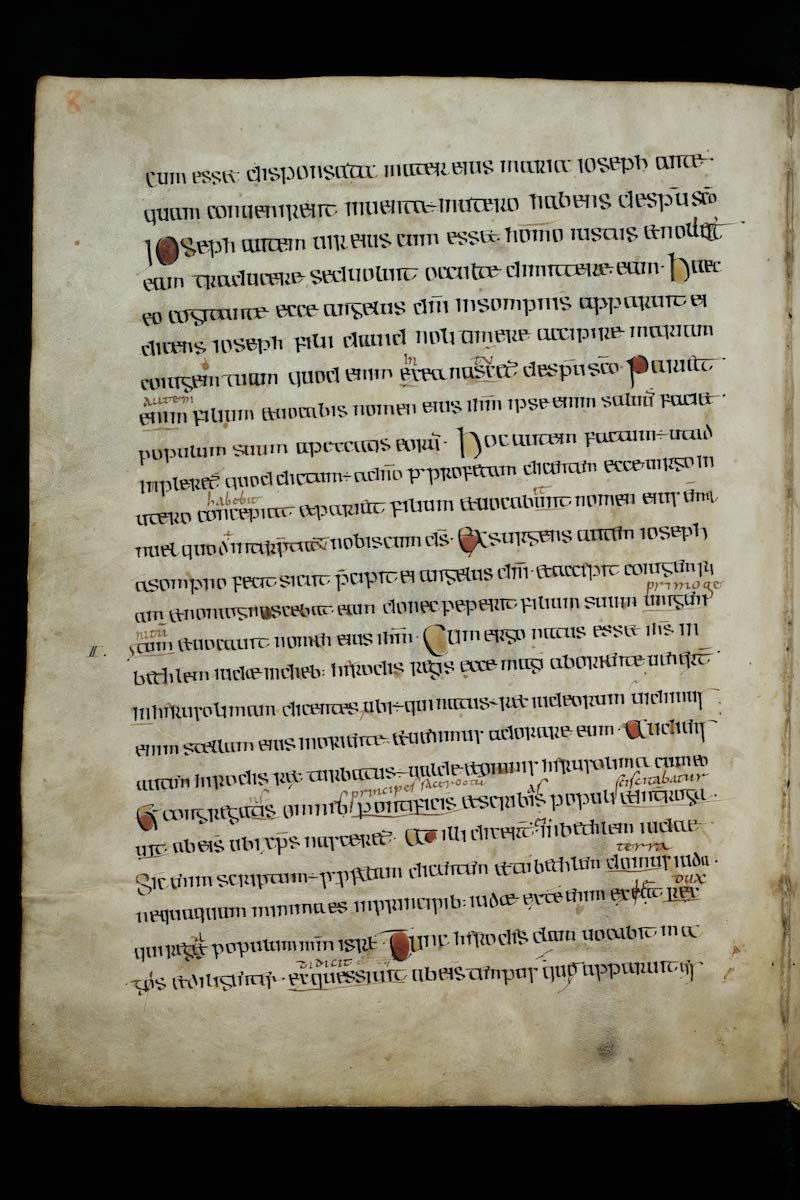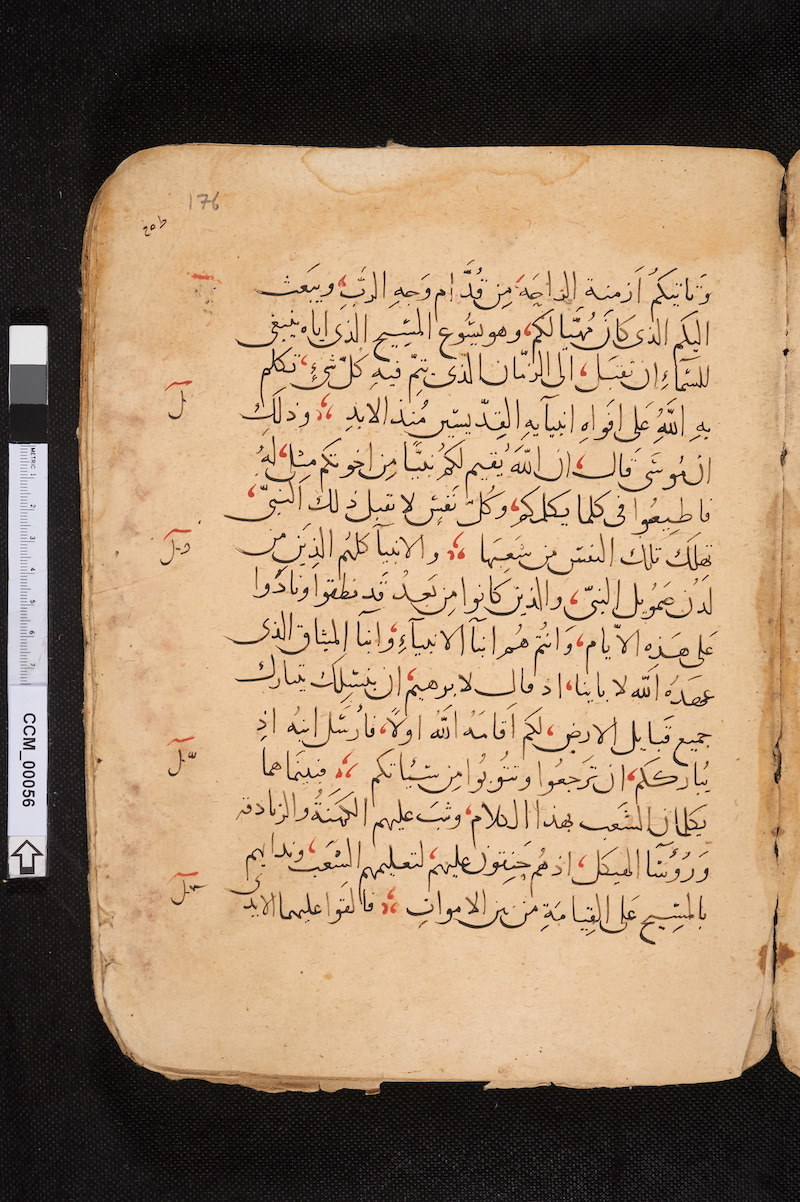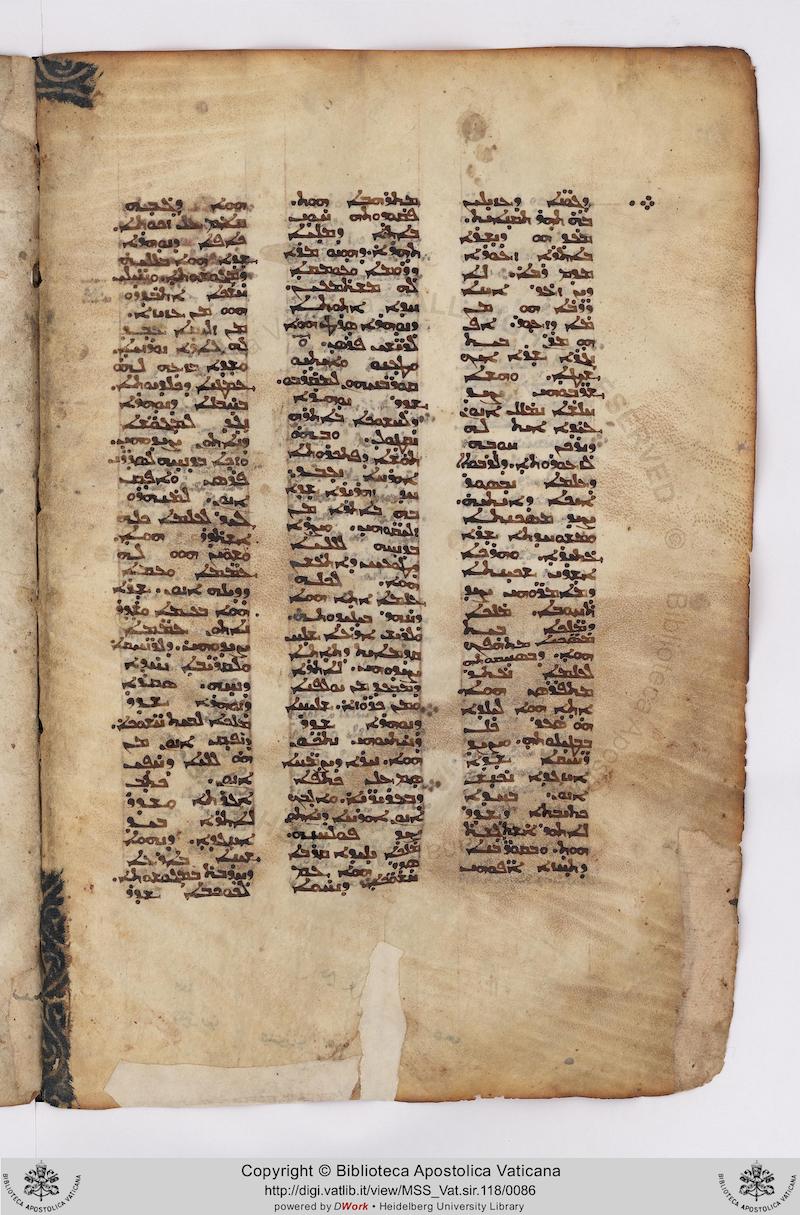
Naskh, 19th Century
-
Title
Gospel Lectionary in the rhymed prose rendition of ‘Abdišo‘ of Nisibis -
Text
Rubric and Gospel reading for the first Sunday of the Annunciation (Luke 1:1-7) -
Language(s)
Arabic -
Writing System
Arabic -
Script(s)
Naskh -
Country
Iraq -
City
Mosul -
Repository
Dominican Friars of Mosul -
Shelf Mark
572 -
Century
19th Century -
Year Range
1800-1900 -
Place Of Origin
Iraq?
x+178+viii pages (both original pagination in Arabic numerals and modern pagination in western numerals), on paper. 1 column, 24 lines per page; binding dimensions 24.5 x 18x 2 cm.
Colophon on p. 177 has both the dates 900 and 967 AH, with the claim that “this is what was written in the hand of its translator…‘Abdišo‘” but these dates are impossible. The colophon of another copy of the work, CCM 91, f. 10r, probably an original manuscript of the translator, notes that the translation was finished “in the year 699 AH and 1611 AG” (= 1299/1300 CE).
Acknowledgements: Described by Adam Carter McCollum
Transcription
NB: Transcribed as closely to the manuscript as possible, given limitations of digital typography: vowels are indicated as in the manuscript, as are hamzas. The dividers at the end of each rhyme (on this page all -á), written in the manuscript as a rubricated circle open on the left, are indicated below with the line |.
1 بٰسْم الله الرحمٰن الرحيمْ
2 نبتدي بعون الله وحسن توفيقه ونكتب كتاب فصولاً
3 لانجيل المقدس الذي يُقرأ في الآحاد والذكارين
4 والاعياد واوقات الاصوام الواقعة في
5 دور السنة من نسخة وترجمة الاب
6 القديس الطاهر النفيس الفاضل الكامل
7 العالم العامل مار عبد يشوع مطران نصيبين
8 وارمنيا واعمالها صلواته تمّم
9 كافة المومنين اجمعين
10 امين
11 واول ذلك للاحد الاول من السبّار اذي عنيته ܐܠܵܗܵܐ ܡܸܠܬܵܐ
12 الانجيل الطاهر لسيدنا يسوع المسيح من بشارة لوقا الرسول
13 لانّ كثيرين آشروا ان يدوّنوا اقاصيص الامور التي نحن بمعرفتها
14 اولى | حسبما ادّاه الينا الذين كانوا شاهدين وخداماً للكلمة
15 منذ الاولى | ما عنَّ لي لقربي من كافهم بهمةٍ وحرصي على حفظِ
16 ما يُتلى | ان اكون لك كاتبًا كلاً على نسقهِ وكنههِ يا ذا
17 الصيت ثاوفيلا | كي تعلم حقيقة اقاويل صدّقتها فكنت بها
18 على الطريق المثلى | كان ايام هيرودس ملك يهوذا كاهن
19 بزكريا يُسمى | من خدمة آل ابيا الكبرى | وامراته من بنات هارون
20 اخي موسى وكانت باليشباع تُدْعى | وكانا كلاهما امام الله
21 على التُقى | سائرين بجميع اوامره التي اوصى | وبمعدلة الرب
22 من غير لومٍ وعُتبى | وما كان لهما ابن يُرجى | لان اليشباع
23 عقرت منذ الصبى | وقد اسنّا اثناهما وبلغا من الكبر أَمَدا
NOTES
Line 9: the manuscript reads احمعين (i.e. without a dot under the ǧīm)
Line 11: عنية is a Syriac loanword: ‘nāytā song, hymn; the title is written in Syriac (East Syriac script), “God the Word.”
Paleographic Features
Particular letter forms
The script is quite legible, though not a straightforward and conventional naskh. It is sans serif, and the line of writing is relatively horizontal, but there are several cases of letters and letter clusters sitting higher than those preceding (e.g. lines 6-8, 18, 20). The double dots (for tāʾ, etc.) are simply one wide mark rather than two distinct points. The sīn generally has no teeth. The yāʾ and alif maqsūra are always distinguished.
Hamza, vocalization and other diacritical marks
Hamza is in lines 21, 23 (but note وامراته in line 19). The dagger alif is written in two places in line 1.
There are a few vowels, e.g.:
- fatḥa with tanwīn (line 14)
- kasra (line 16); kasra with tanwīn in line 15
- ḍamma is especially marked in the first syllable at rhyme-end
In a few places (lines 13-15, 17) šadda is marked, and a madda is written in lines 13, 19.



